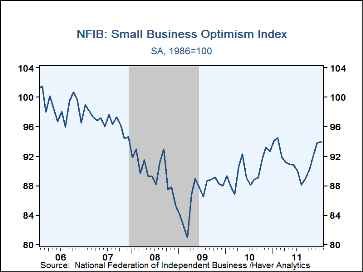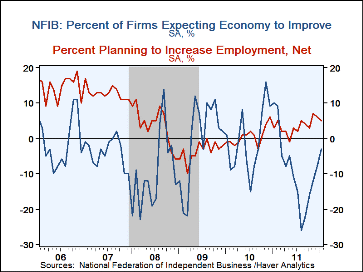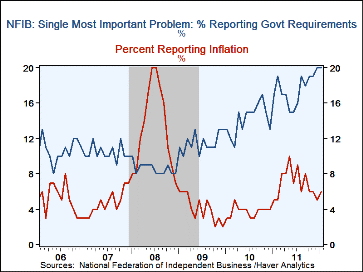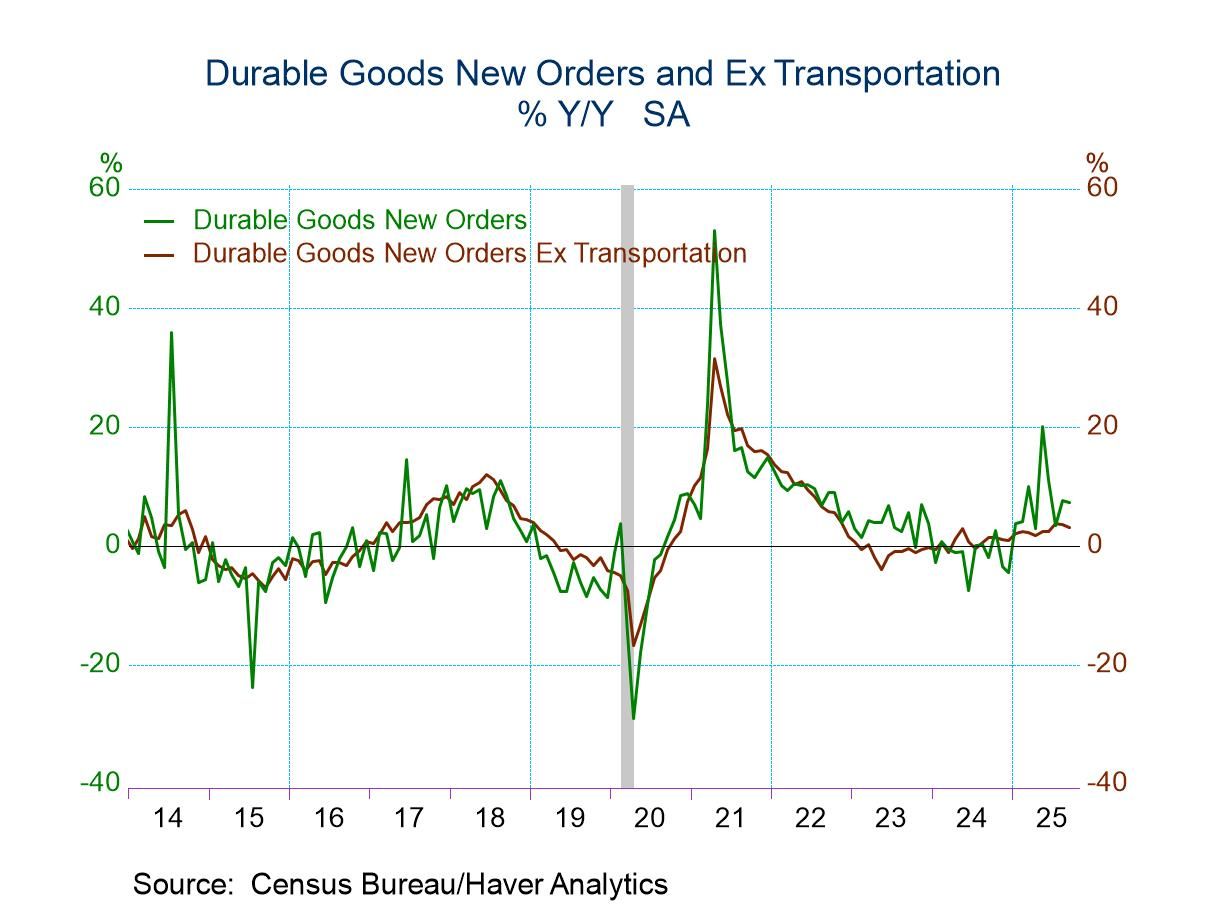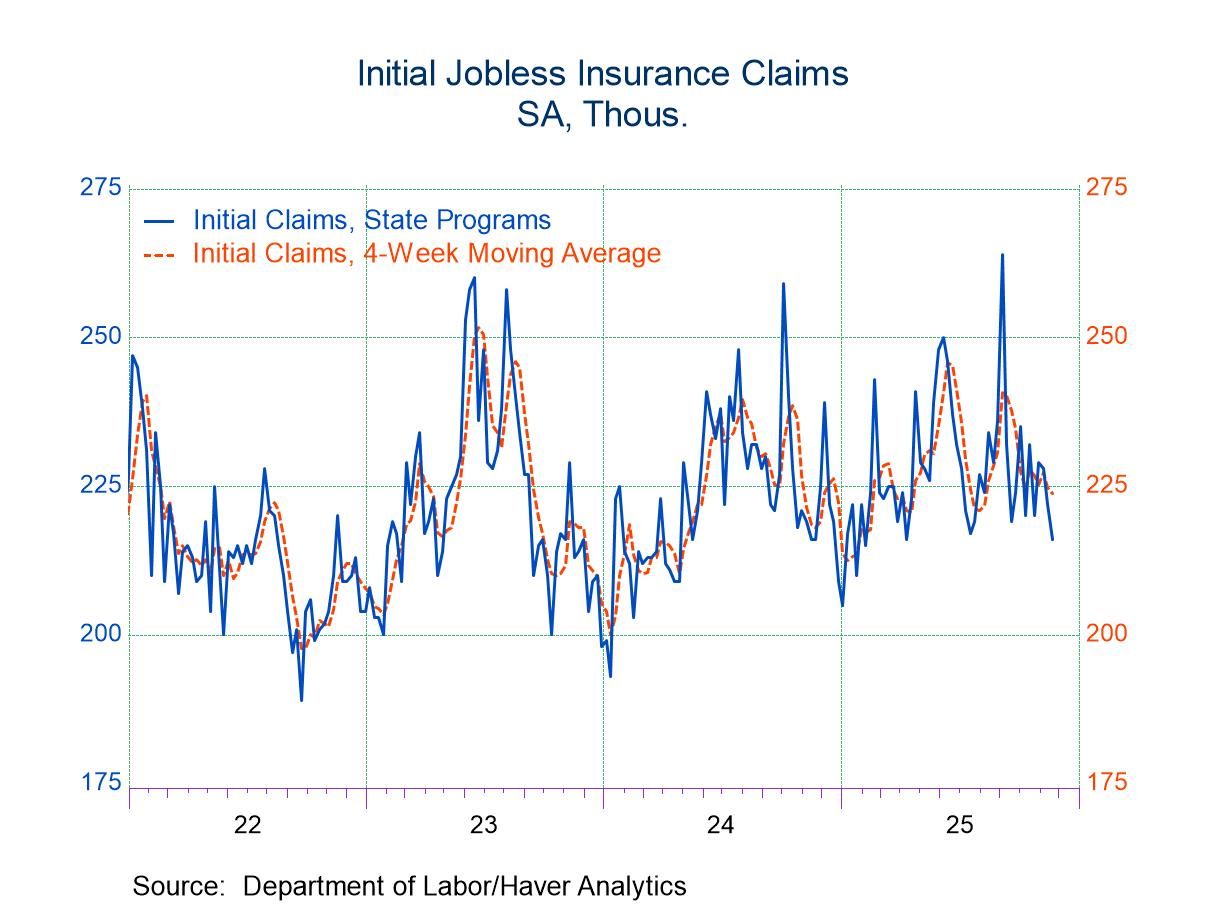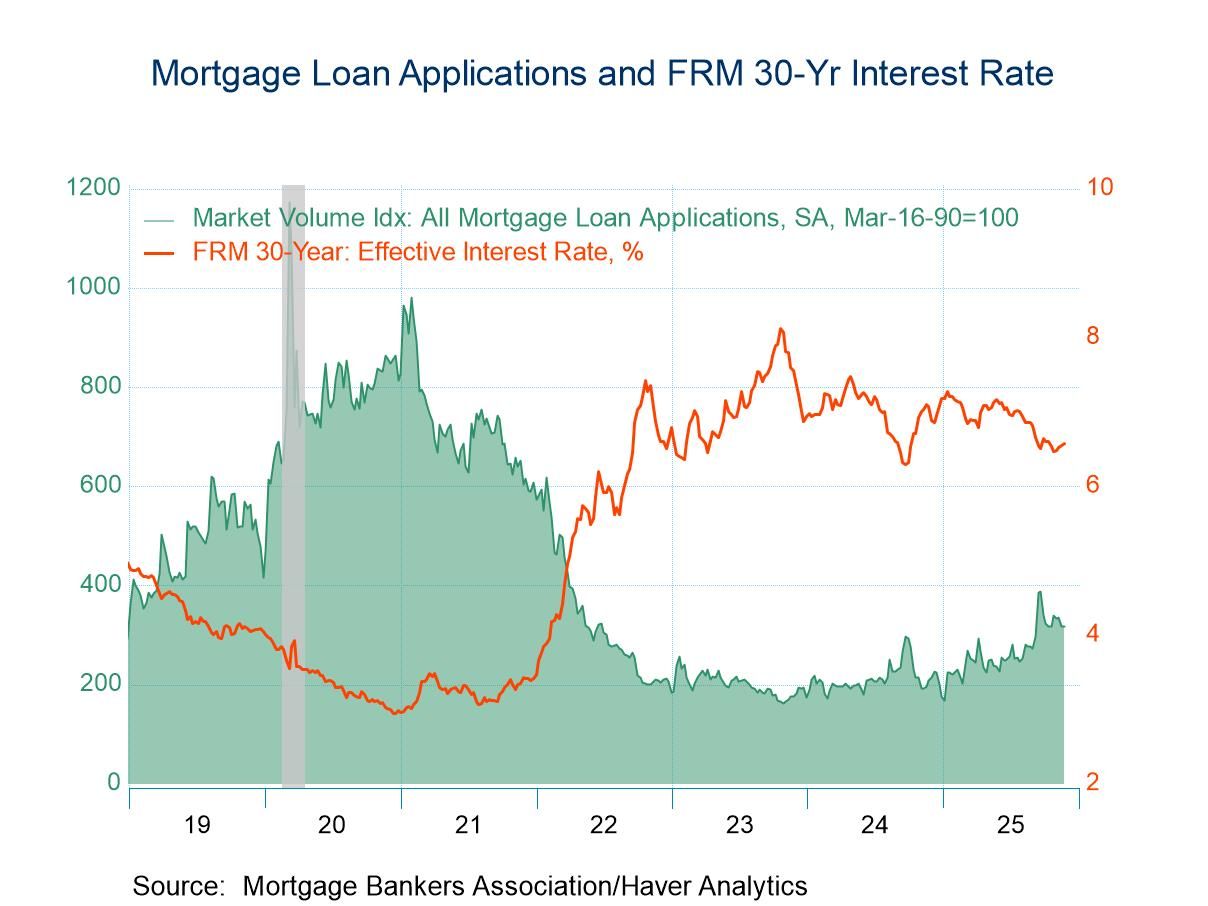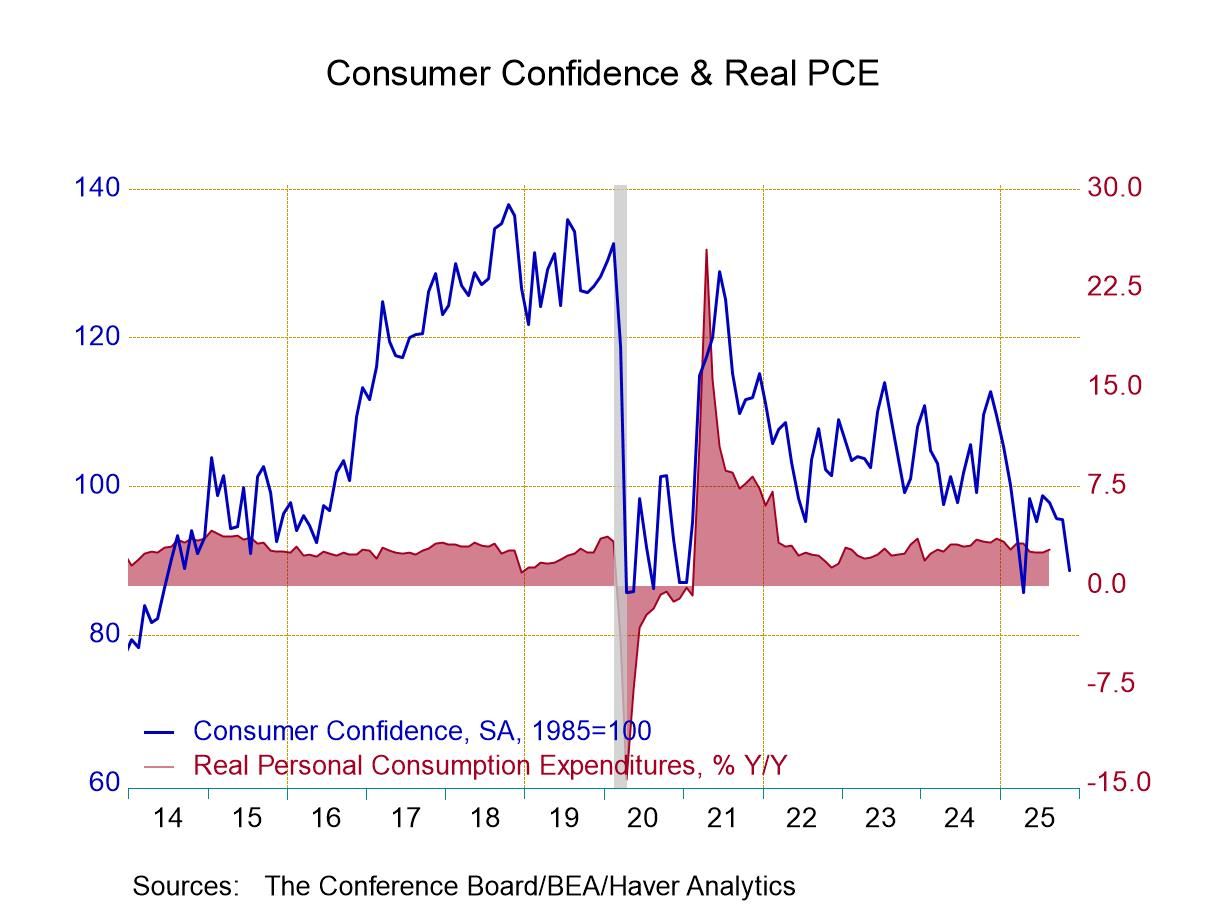 Global| Feb 14 2012
Global| Feb 14 2012U.S. Small Business Optimism Is Stable At Recent High
by:Tom Moeller
|in:Economy in Brief
Summary
Small business optimism appears intact. The National Federation of Independent Business indicted that its January index of small business optimism was 93.9 versus 93.8 in December. These figures are the highest since last February. [...]
Small business optimism appears intact. The National Federation of Independent Business indicted that its January index of small business optimism was 93.9 versus 93.8 in December. These figures are the highest since last February. The percentage of firms indicating that now is a good time to expand the business slipped m/m but remained at its recovery high. The job openings reading was the highest since June 2008, although the percentage of firms planning to increase employment slipped. Those reporting difficulty finding qualified candidates fell and reversed an earlier uptrend. Though the percentage of firms feeling that now is a good time to expand the business slipped m/m it was near its highest since October 2010. Fewer firms were raising prices but the percentage of firms planning to raise prices rose to its highest level since August.
The most important problems faced by small business were poor sales (by a greatly lessened 22%), government requirements (19%, the highest since 1996), taxes (18%), insurance cost & availability (9%), competition from large businesses (8%), inflation (6%), quality of labor (6%), financial & interest rates (4%) and the cost of labor (4%).
Roughly 24 million small businesses exist in the U.S. and they create 80% of all new jobs. The NFIB figures can be found in Haver's SURVEYS database.
| National Federation of Independent Business | Jan | Dec | Nov | Jan'11 | 2011 | 2010 | 2009 |
|---|---|---|---|---|---|---|---|
| Small Business Optimism Index (SA,1986=100) | 93.9 | 93.8 | 92.0 | 94.1 | 91.4 | 89.9 | 86.7 |
| Firms Expecting Higher Real Sales In Six Months (Net %) | 10 | 9 | 4 | 13 | 3 | 1 | -11 |
| Firms Expecting Economy To Improve (Net %) | -3 | -8 | -12 | 10 | -9 | -1 | -0 |
| Firms With One or More Job Openings (Net %) | 18 | 15 | 16 | 13 | 14 | 10 | 9 |
| Firms With Few or No Qualified Applicant For Job Openings (Net %) | 31 | 34 | 35 | 28 | 32 | 27 | -- |
| Firms Reporting That Credit Was Harder To Get (Net %) | 8 | 8 | 10 | 10 | 10 | 13 | 14 |
| Firms Raising Avg. Selling Prices (Net %) | -1 | 0 | 0 | -4 | 5 | -12 | -20 |
Tom Moeller
AuthorMore in Author Profile »Prior to joining Haver Analytics in 2000, Mr. Moeller worked as the Economist at Chancellor Capital Management from 1985 to 1999. There, he developed comprehensive economic forecasts and interpreted economic data for equity and fixed income portfolio managers. Also at Chancellor, Mr. Moeller worked as an equity analyst and was responsible for researching and rating companies in the economically sensitive automobile and housing industries for investment in Chancellor’s equity portfolio. Prior to joining Chancellor, Mr. Moeller was an Economist at Citibank from 1979 to 1984. He also analyzed pricing behavior in the metals industry for the Council on Wage and Price Stability in Washington, D.C. In 1999, Mr. Moeller received the award for most accurate forecast from the Forecasters' Club of New York. From 1990 to 1992 he was President of the New York Association for Business Economists. Mr. Moeller earned an M.B.A. in Finance from Fordham University, where he graduated in 1987. He holds a Bachelor of Arts in Economics from George Washington University.


